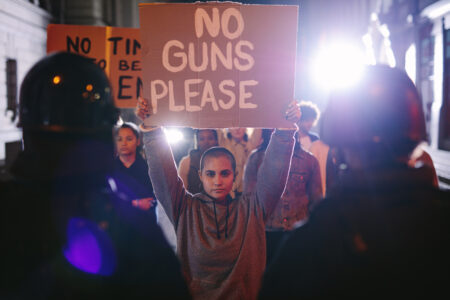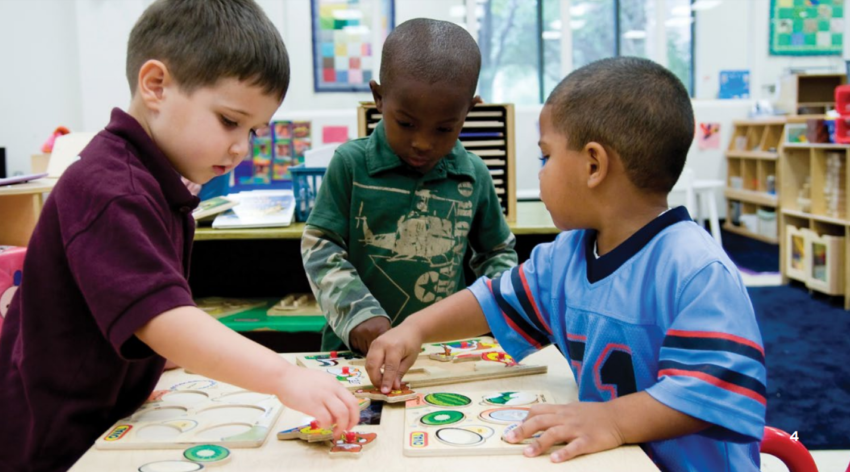
Share On Social!
Children of color who are disproportionately targeted by harsh school discipline policies are also more likely to face adverse childhood experiences (ACEs) out of school, according to a new report.
ACEs—such as poverty, neglect, and parental divorce—can impair healthy development and education.
But little is known about how exclusionary school discipline practices—suspensions, expulsions, referrals to law enforcement, and corporal punishment—affect children with ACEs.
So, ChangeLab Solutions created an issue brief, School Discipline Practices: A Public Health Crisis and an Opportunity for Reform, that shows how widespread use of exclusionary school discipline aggravates pre-existing ACEs and robs students of opportunities for learning and growth.
“These practices can compound feelings of isolation and fear, increase stress, and deepen mistrust between students and educators,” according to ChangeLab.
Latino students are particularly affected.
ACEs and Discipline among Latino Students
Latino students have the highest rates of high school dropout in the country.
Why?
Latino kids and other kids of color face more adversity and toxic stress at home and in their community. They face harsher and more frequent punishment in school than their white peers. They also face segregated, under-resourced neighborhoods lacking economic development and stability.
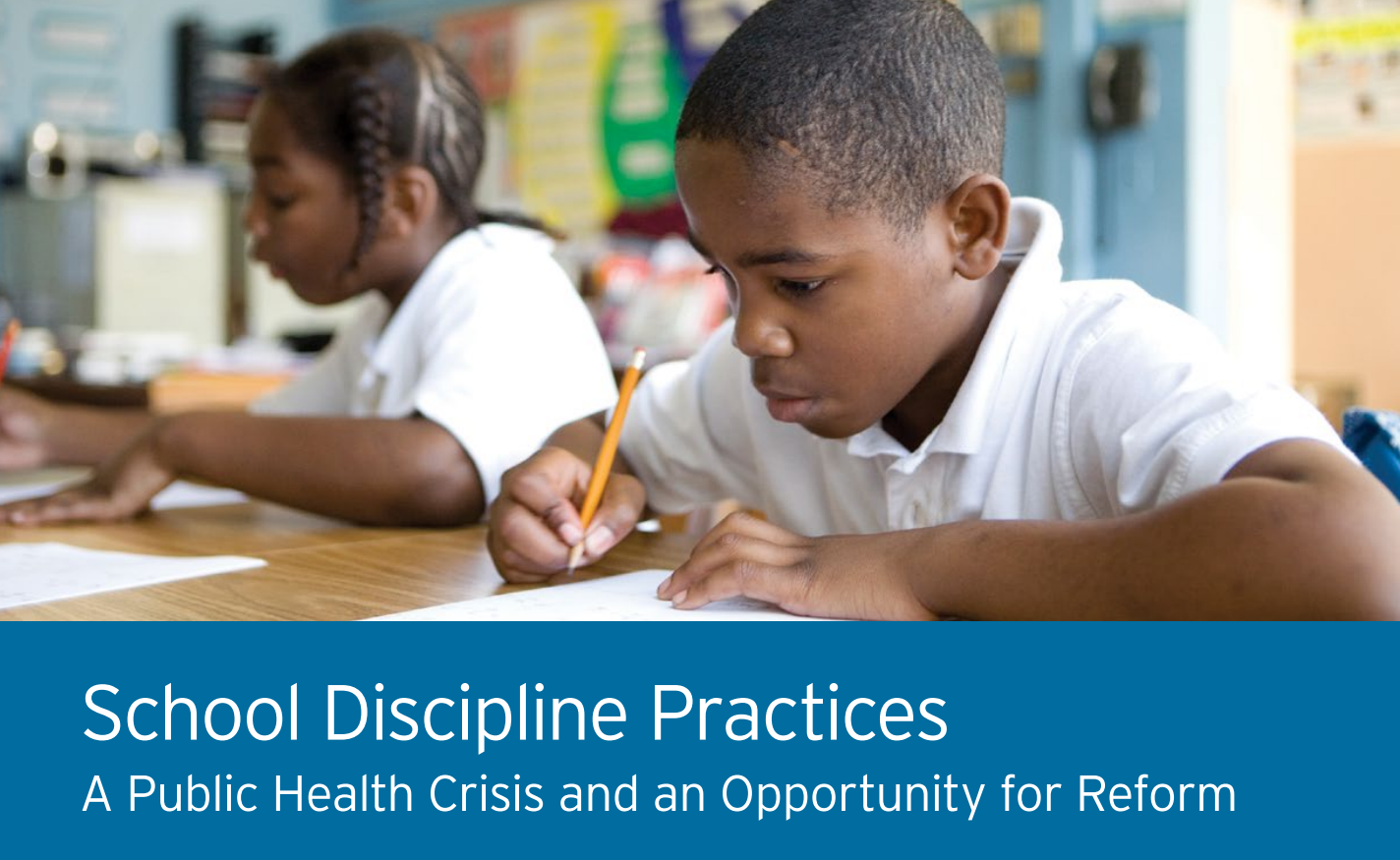 Three in four Latino kids experience at least one ACE, compared to 46% of youth in general, according to Salud America! Research Review: The State of Latino Early Childhood Development.
Three in four Latino kids experience at least one ACE, compared to 46% of youth in general, according to Salud America! Research Review: The State of Latino Early Childhood Development.
As the number of ACEs increase, so does the risk for negative academic, behavioral and health outcomes.
“In the absence of protective factors, a child exposed to prolonged adversity may develop a toxic stress response that interrupts healthy brain development,” according to ChangeLab’s issue brief.
These children are most in need of protective factors, like support from a caring adult.
Schools should be sensitive to the social and emotional needs of these children.
However, in school, Latino and Black children are often met with exclusionary discipline.
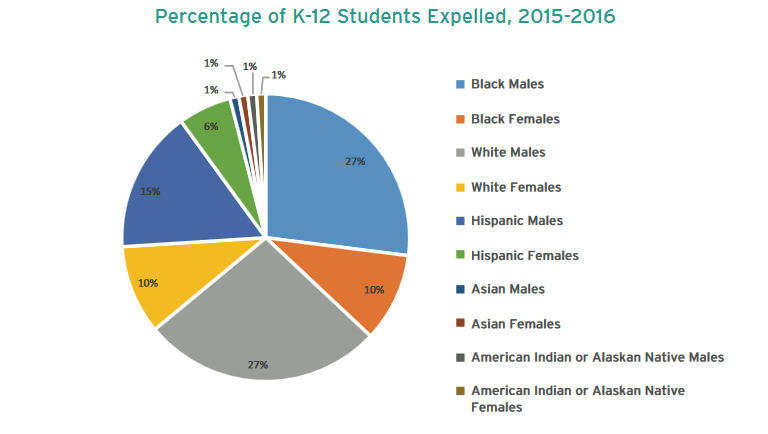 Latino males make up 13% of enrolled K-12 students, but account for 15% of out-of-school suspensions and 15% of expulsions. It’s particularly bad in Texas.
Latino males make up 13% of enrolled K-12 students, but account for 15% of out-of-school suspensions and 15% of expulsions. It’s particularly bad in Texas.
It’s worse for Black males. Black males make up 8% of enrolled K-12 students, but account for 25% of out-of-school suspensions and 27% of expulsions.
Exclusionary discipline practices exacerbate racial disparities and undermine the traditional purpose of schools to create a safe, nurturing learning environment. It also degrades parents’ views of schools as safe, accepting places.
Promising Policies to Reduce Exclusionary Discipline
Fortunately, ChangeLab presents an alternative vision for schools.
The vision is grounded in evidence-based practices that improve learning environments, build children’s resilience, and promote healthy development of the whole child.
That starts with some good news.
Under the Every Student Succeeds Act (ESSA), states and districts have greater flexibility to allocate funds to implement healthier alternatives that cultivate a positive school environment and build resilience.
Additionally, between January 2017 and April 2018, 19 states and Washington, D.C., enacted or proposed legislation to reduce exclusionary school discipline practices.
But it will take more than curbing suspensions and expulsions.
“Equally important to reducing the use of exclusionary disciplinary practices are implementing supportive alternatives that empower students and remove barriers to education,” according to ChangeLab.
A New Framework for Empowering Students
Restorative justice practices and social and emotional learning can remove barriers and provide health-promoting skills, according to ChangeLab’s issue brief.
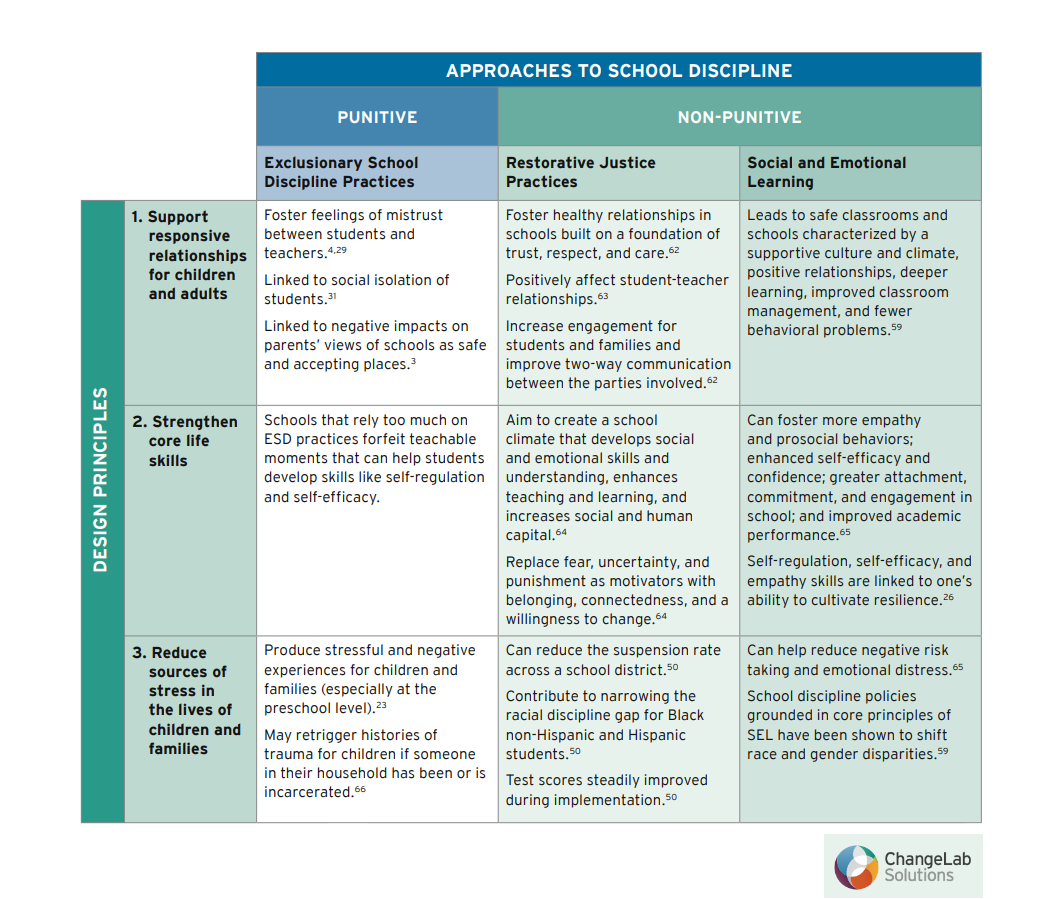
The authors wanted to think more comprehensively than alternative discipline.
They wanted to ensure that these approaches aligned with three design principles identified by the Center on the Developing Child at Harvard University.
The design principles include:
- Support responsive relationships for children and adults;
- Strengthen core life skills; and
- Reduce sources of stress in the lives of children and families.
So, ChangeLab Solutions created a framework to map out how the two alternative discipline approaches reinforce each of the three design principles.
Their framework illustrates how schools can effectively address discipline issues while improving the chances of positive outcomes for children and families.
Download the 9-page brief and share with parents, educators, and school leaders in your community.
“A change in course from a punitive to a healing approach to school discipline—one that ensures that schools are places where all students have the opportunity to heal, learn, and thrive—will require a concerted effort, commitment of resources, and patience,” the issue brief states.
What Can You Do?
Over 65 cities have started Handle With Care.
You can get Handle With Care started in your community, too!
Download the free Salud America! “Handle With Care Action Pack” to start a Handle With Care program, in which police notify schools when they encounter children at a traumatic scene, so schools can provide support right away.
The Action Pack, which contains materials and technical assistance to help school and police leaders everywhere plan their own Handle With Care program, was created by Dr. Amelie G. Ramirez, director of the Salud America! Latino health equity program at UT Health San Antonio, with help from the West Virginia Center for Children’s Justice, which started the Handle With Care program in 2013.
By The Numbers
142
Percent
Expected rise in Latino cancer cases in coming years



